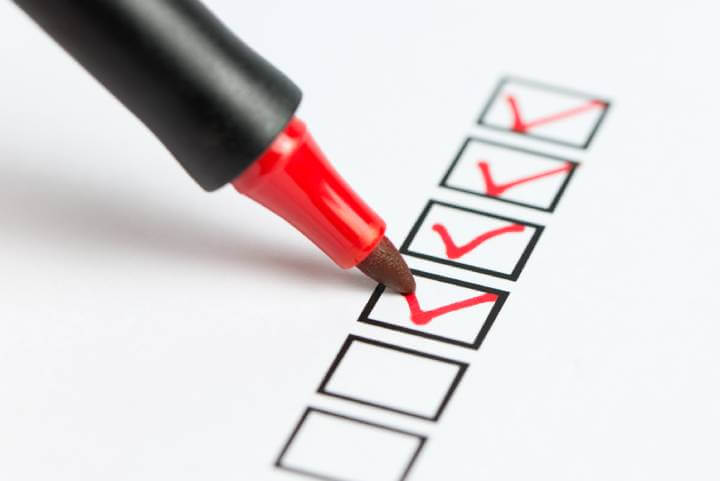When we think about how to master a skill, change our habits, or learn new things, we often think big. And then, after biting off too much to chew, we often stumble and give up on our goals too quickly.
So, why not think small instead?
Mini habits are microscopic changes you can make in your routines and behavior. A daisy chain of these tiny tweaks spread across a span of time can (hopefully) turn into a new habit.
It sounds uncomplicated because it is. And here, we will look at the power of mini habits to ignite one of the most essential lifelong habits of all - learning.
Want to learn more?
Take your soft skills to the next level with our comprehensive (and free) ebook!
What does a mini habit look like?
Stephen Guise popularized the word “mini habit” in his book Mini Habits: Smaller Habits, Bigger Results. According to him,
One small step + desired behavior = high probability of further steps
Behavioral scientist and New York Times bestselling author, B.J Fogg calls them “Tiny Habits” in his book of the same name.
Want to put it to the test quickly? Ask yourself this question:
What is the smallest reasonable step I can take that won’t fail?
For example, you may be trying to read a book but failing to get through it right now. Start by reading just one page. Commit to this small action every day.
A “reasonable” step you can take even on your worst days would be to read one page. Maybe, you will end up reading more than a page on some days, but even a consistent action of a page a day will help you finish the book.
This is the simple secret behind starting any mini habit - sticking to the smallest action you think you can do every day.
Why use mini habits to master a skill?
Learning a new skill or starting a hobby often makes it to our New Year's resolutions list. Self-directed learning can easily be classified as a keystone habit because it can change so many areas of your life. According to author of The Power of Habit, Charles Duhigg,
Keystone habits are small changes or habits that people introduce into their routines that unintentionally carry over into other aspects of their lives.
But learning involves willpower and that can be in short supply at the end of a tiring day.
A learning goal that’s nowhere near the horizon can also consume your life and suck the fun out of it. And once the fun is gone, procrastination rears its ugly head. Motivation also doesn’t linger.
Mini habits can help break any barrier of procrastination if you break down your learning goal into the tiniest (and even the stupidest) step possible and do them every day.
Make your learning goal so small that it won’t fail. Make it so tiny that you don’t have to think twice to begin it.
After all, how hard it is to read two pages of a book every day. Or, learn and practice one Excel shortcut in 5 minutes or less.

How to set up learning a new skill with a mini habit
Before you start the habit, you have to decide what you want to apply it to.
It’s even better if you pick a small area of the said subject to master first. Building a learning routine that becomes a habit in the long run is more important at first than the skill itself.
The consistent, repetitive action of a mini habit will help you develop your skills rapidly.
Here are some tips and steps you can take to set up a learning mini habit.
1. Start small
The very essence of a mini-habit is to start small. Break down the learning goal into the tiniest step possible.
Tip: Browse the syllabus for a course and start with the smallest logical unit in it that takes just a few minutes of commitment. For example, watching a 3-6 minute video lesson in your chosen GoSkills course, or spending a minute to read the accompanying quick reference guide.
2. Focus on one skill at a time
Taking on too many skills to master is a bit like multitasking. Repeated research on productivity has already found that doing too many things has a switching cost.
Tip: Start with a simpler skill as an experiment to test the power of mini habits.
3. Set clear goals
Whether it's nailing your dream job, acing a tough project, or hitting a personal milestone, each achievement boosts your self-confidence and gets your morale soaring. And here's the best part: celebrating those wins not only gives you a sweet sense of validation but also fires up your motivation for bigger and bolder goal setting. Goals are like a beacon and a timeline is the milestones you can check off when you begin your learning journey. Clear time-bound goals also help you stay accountable.
Tip: Think of your learning as a long-term project with clear timelines and SMART goals.

4. Find your ideal time
Establish a fixed time in your schedule. Mini habits take just a few minutes so it isn’t difficult to carve them out from a busy schedule.
Tip: Preferably do your learning first thing in the morning. The brain has a reservoir of energy and you won’t fall to the tyranny of a busy day.
5. Remove distractions
Mini habits take up very little time so the risk of interruptions is also minimized. Still, set your boundaries. Remove distractions like mobile notifications and other demands on your time.
Tip: Keep everything you need to learn with at hand. Reading a page is easier if you have the book next to you.
6. Use habit stacking
Behavioral science and proponents like B.J Fogg say one of the best ways to build a new habit is to identify a current habit you already do each day and then stack your new behavior on top. This is called habit stacking.
Tip: Taking an online course? Make it the start page in your browser so it opens up when you launch your browser first thing in the morning.
7. Take advantage of microlearning
Thanks to mobile phones, you can tap into microlearning videos and other tools to learn on the go. Every minute of downtime (for instance, while commuting) can be turned into an upskilling opportunity.
Tip: GoSkills microlearning courses feature bite-sized lessons to fit into your busy schedule. Each course video is between 3-6 minutes long, accompanied by practical exercises and quizzes to help you cement your knowledge. Start learning essential business and software skills like Excel, Microsoft Office, project management, soft skills, coding, and more with an all-access 7 day free trial to GoSkills.

8. Give yourself rewards
Motivation can flag with self-directed learning. Tiny rewards at periodic junctures can help improve focus. The best thing about these rewards is that you can set them up yourself.
Tip: It can be as simple as a gummy bear after a page of reading or as huge as a Saturday party after a month of mini habits.
9. Revise regularly
What we do not go back to we forget. The Forgetting Curve shows that you as a learner will forget an average of 90% percent of what you learn within the first month.
So, it is critical to build a revision schedule into your learning habit. Spaced repetition helps to flatten out the forgetfulness curve.
Tip: Use a flashcard app like Anki to improve retention. Studying a single deck a day in just a few minutes can itself become a mini habit stacked on top of the original learning habit. Anki is especially popular for language learning and exam prep.
10. Practice, practice, practice
Regular and deliberate practice helps you repair your weak points. Like our school tests, it fortifies what you are learning in your memory.
Tip: Teaching someone else is one of the best ways to practice your learning.
How to track your learning
Tracking your mini habits is a way of keeping score. This simple visualization gives you an idea of how those infinitesimal small minutes of learning have compounded into something big with time.
When you add this “tracking” to your daily learning routine, you will be more mindful of your learning too.
There are many ways to track your learning and log it somewhere.

1. Use a simple sheet of paper and add a cross mark against a day.
For inspiration, see the XEffect Subreddit where participants take on a 50-day journey to create/break one or more habits by simply making a 7x7 grid on a card and crossing off each day.
2. Use any habit tracking app for Android or iOS.
Apps like the Loop Habit Tracker (Android) and Strides (iOS) make tracking your mini habit as easy as a tap. They also ping you with reminders and notifications that can serve as cues.
3. Use a Bullet Journal
Bullet journals are designed for rapid logging. They also give you a bit more space to jot down any details you may wish to remember about your study. For instance, a particular part to revise or practice.
You can easily build a study tracker or download the many free bullet journal templates that turn the humble journal into your accountability partner.
Also: Stephen Guise also recommends a few tools on his website. Sites like GoSkills also have built-in features to help you track your progress, like weekly progress reports to show how many lessons you have completed.
Examples of learning with mini habits
Learning in little bytes with consistency is what matters most to form mini habits. With that said, here are a few more examples of learning with mini habits.
1. Learn a foreign language: Decide to learn three new words of Spanish a day or spend three minutes on a new Spanish word a day. Using Netflix to learn a language can help too; watch shows with subtitles in Spanish to pick up new vocabulary and phrases while enjoying the content.
2. Learn to write better: Find writing you would like to emulate and use it as a template to write just 50 words a day. A writing tool like FocusWriter gives you a distraction-free interface and timers with alarms.
3. Become a better programmer: Read one code snippet per day or write a snippet every day.

4. Learn a musical instrument: Bring it out of the case and try to play a few notes or practice a song (a song is usually just 5 minutes long). Apps like Yousician help with quick workouts.
5. Enhance creativity: Write down one idea a day. For example, you can think of a weak business area and scribble down a creative solution.
6. Get Familiar with Digital Marketing: Use microlearning tools like Google Primer to brush up on the fundamentals with one 5-minute lesson a day.
7. Get better at soft skills: Want to network more or get better at negotiation? You can learn soft skills online and commit to identifying one opportunity every day at work. For instance, write a “thank you mail” to a colleague or a client.
8. Meditate for 5 minutes: Meditation can reduce stress and declutter your brain. A meditation mini habit can be stacked to something as mundane as switching on your computer in the morning and taking mindful breaths for five minutes.
Want to learn more?
Take your soft skills to the next level with our comprehensive (and free) ebook!
The best habits won’t tax your brain
A mini habit will turn into an iron-clad habit when you will start doing it unconsciously without extrinsic motivation or thought of a reward. Watch for the day when you stop looking at the clock or an imaginary goal post while learning. That will be the day you erase the prefix “mini” from your habits.
But it also starts with that first step and a plan. Have you made a plan to learn something new yet?
Make your plan and then break it down to the tiniest step you can do without feeling the resistance.
Start learning new skills today with GoSkills courses. GoSkills courses feature bite-sized lessons to make it easy for you to learn something new in a matter of minutes. Start your 7 day free trial today.
Need to brush up on your soft skills?
Start learning for free with GoSkills courses
Start free trial



